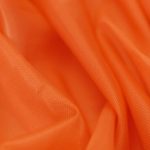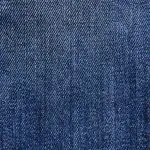Hey there!
Have you ever wondered if fabrics can actually melt in extreme heat? It's a valid concern, especially if you're dealing with high temperatures in your line of work or in an emergency situation.
Understanding how different fabrics react to extreme heat is crucial for your safety and for making informed decisions about what to wear or use in such conditions.
So, let's dive into the science behind fabric melting, the factors that influence it, and how you can prevent and address fabric damage in high temperatures.
Get ready to master the art of fabric resilience in extreme heat!
Key Takeaways
- Fabric melting occurs when exposed to extreme heat
- Synthetic fabrics like polyester and nylon have high heat resistance
- Natural fabrics like cotton and silk are more prone to melting
- Understanding fabric composition and structure is important for preventing fabric damage in extreme heat.
Understanding Fabric Melting
You frequently experience fabric melting when exposed to extreme heat, causing it to undergo a transformation from solid to liquid state. This phenomenon is a result of the fabric's properties and its heat resistance. Understanding fabric melting involves delving into the intricacies of fabric manufacturing and the melting process.
Fabric properties play a crucial role in determining how a fabric responds to heat. Different types of fabrics have varying heat resistance levels. For instance, synthetic fabrics like polyester and nylon are known for their high heat resistance, making them less prone to melting compared to natural fabrics such as cotton or silk. The melting process occurs when a fabric is subjected to temperatures beyond its heat resistance capacity. During this process, the fabric's molecular structure breaks down, causing it to lose its solid form and turn into a liquid.
In the realm of fabric manufacturing, understanding how different fibers are woven together and the chemical composition of the fabric is essential in predicting its behavior when exposed to extreme heat. By comprehending the melting process and fabric properties, you can make informed decisions when choosing fabrics for various applications.
Factors Affecting Fabric Melting
When it comes to fabric melting, there are a few key factors that come into play. Factors such as heat intensity and duration, as well as fabric composition and structure, play a significant role in determining how a fabric will respond to extreme heat.
Understanding these factors can help you make informed decisions about the type of fabric to use in high-temperature environments.
Heat Intensity and Duration
In extreme heat, fabric melting can occur due to the intensity and duration of the heat exposure. The behavior of fabrics under thermal stress is influenced by their heat resistance and performance. To illustrate, consider the table below, which outlines the impact of heat intensity and duration on fabric melting:
| Heat Intensity | Heat Duration | Fabric Melting |
|---|---|---|
| Low | Short | Unlikely |
| Moderate | Moderate | Possible |
| High | Prolonged | Likely |
| Very High | Extended | Highly Probable |
| Extreme | Long-lasting | Almost Certain |
Understanding how fabric melting is affected by heat intensity and duration is crucial for selecting appropriate materials in environments with high temperatures. It also underscores the importance of considering these factors when designing protective clothing for workers in extreme conditions.
Fabric Composition and Structure
The fabric composition and structure significantly affect the likelihood of fabric melting in extreme heat. Here are three key factors that influence fabric melting:
- Fabric Durability: The durability of a fabric is crucial in determining its resistance to melting in extreme heat. Fabrics with higher durability, such as those made from synthetic fibers like aramid or modacrylic, are less likely to melt compared to less durable fabrics like nylon or polyester.
- Thermal Insulation: The thermal insulation properties of a fabric play a significant role in its melting behavior. Fabrics with better thermal insulation, like wool or meta-aramid, can withstand higher temperatures before melting, whereas fabrics with poor thermal insulation, such as acrylic or rayon, are more prone to melting in extreme heat.
- Fabric Structure: The physical structure of a fabric, including its weave, thickness, and density, can impact its melting point. Tighter weaves and denser fabrics generally have higher resistance to melting than looser weaves and lighter fabrics.
Types of Fabrics Prone to Melting
Certain fabrics, such as polyester and nylon, are more prone to melting in extreme heat. Understanding the fabric melting process and the melting characteristics of different materials is crucial in selecting the right clothing for various environments.
Polyester, commonly found in activewear and outdoor gear, has a low melting point, making it susceptible to heat damage. When exposed to high temperatures, polyester fibers can melt and stick to the skin, causing severe burns.
Nylon, another synthetic fabric, also has a low melting point and can deform or melt when encountering heat sources such as fire or hot surfaces. Additionally, acrylic and acetate fabrics exhibit similar melting characteristics, making them unsuitable for high-temperature environments.
Conversely, natural fibers like cotton and wool are less prone to melting, although they can still burn under extreme heat.
Effects of Extreme Heat on Fabrics
When exposed to extreme heat, fabrics can reach their melting points, resulting in potential safety hazards.
Understanding the fire-resistant options available can help ensure clothing safety in high-temperature environments.
Exploring the impact of extreme heat on fabrics can provide valuable insights into maintaining safety and protection.
Fabric Melting Points
Exploring fabric melting points can help you understand how extreme heat affects different materials.
1) Fabric durability: Knowing the melting point of a fabric can provide insight into its durability under high temperatures. Fabrics with higher melting points are less likely to melt or degrade in extreme heat, making them more suitable for applications where heat resistance is crucial.
2) Thermal insulation: Understanding fabric melting points is essential for selecting materials for thermal insulation purposes. Fabrics with lower melting points may not be suitable for insulating applications in high-temperature environments.
3) Material selection: Knowledge of fabric melting points is valuable when choosing materials for specific uses, ensuring that they can withstand the expected levels of heat exposure. This information empowers you to make informed decisions when selecting fabrics for various applications.
Fire-Resistant Fabric Options
To protect yourself from extreme heat, consider fire-resistant fabric options for their ability to withstand high temperatures and minimize the risk of melting or degrading.
Flame retardant fabrics are designed to resist ignition, slow down the spread of flames, and self-extinguish when the ignition source is removed. These fabrics provide an added layer of protection in hazardous conditions and can significantly reduce the risk of burns or injuries.
Additionally, fire-resistant fabrics offer thermal insulation, which helps in maintaining body temperature and protecting against heat transfer. When exposed to extreme heat, these fabrics can provide crucial moments for escape or rescue by delaying the onset of burns.
Investing in fire-resistant fabric options is a proactive measure to enhance safety in environments where exposure to high temperatures is a concern.
Impact on Clothing Safety
Extreme heat can have a significant impact on clothing safety, affecting the performance of fabrics in high-temperature environments. When considering clothing protection in extreme heat, it's essential to understand the effects on fabrics. Here's what you need to know:
- Material Selection: Certain fabrics can offer better heat resistance, protecting you from potential harm. Look for options specifically designed for high-temperature environments.
- Heat Exposure Limits: Fabrics can withstand different levels of heat exposure. Understanding the limits of the fabric you're wearing is crucial for ensuring your safety in extreme heat conditions.
- Performance Under Stress: Fabrics react differently to extreme heat. Some may lose strength, while others may maintain their integrity. Assessing how a fabric performs under stress is vital for clothing safety in high-temperature environments.
Preventing Fabric Damage in High Temperatures
To prevent fabric damage in high temperatures, you should carefully select fabrics with high heat resistance. When choosing clothing or fabrics for high-temperature environments, it's crucial to consider their ability to withstand extreme heat. Fabrics with high heat resistance are less likely to melt, shrink, or become damaged in high temperatures, ensuring the durability and safety of your clothing. Here's a table to help you select fabrics with high heat resistance:
| Fabric Type | Heat Resistance Level | Best Use |
|---|---|---|
| Nomex | High | Firefighter uniforms |
| Kevlar | High | Industrial workwear |
| PBI | High | Military and firefighting |
| Modacrylic | Moderate | Welding and firefighting |
Testing Fabric Resistance to Heat
Testing fabric resistance to heat requires subjecting various fabric types to controlled high-temperature conditions. This is done to assess their ability to withstand extreme heat without melting or becoming damaged. The process is crucial for ensuring that fabrics meet heat resistance standards and can withstand the demands of specific environments.
Here are three key aspects of testing fabric resistance to heat:
- Testing Methods: Fabric heat resistance can be evaluated using a variety of methods. These include exposure to direct heat sources, such as flames or hot surfaces, as well as indirect heat sources like ovens or specialized testing equipment. These methods help simulate real-world conditions and determine how fabrics perform when exposed to high temperatures.
- Heat Resistance Standards: Testing fabric resistance to heat involves comparing the results against established heat resistance standards. These standards define the minimum requirements for fabrics to be considered heat-resistant. They provide a benchmark for evaluating the performance of fabrics under extreme heat conditions.
- Quality Assurance: By rigorously testing fabric resistance to heat, manufacturers and regulatory bodies can ensure that products meet quality standards. This testing process is important for verifying that fabrics are safe for use in environments where high temperatures are a concern. It helps maintain consistency and reliability in the heat resistance of fabrics, providing assurance to consumers and industries alike.
Emergency Measures for Fabric Melting
In the event of fabric melting, your primary concern is to swiftly remove the affected clothing and avoid skin contact to prevent burns. Here are some emergency measures for fabric melting that you should be aware of:
| Emergency Response | Fabric Preservation |
|---|---|
| Immediately remove melted fabric | Do not attempt to wash melted fabric |
| Cool the affected area with cold water or ice packs | Preserve any remaining fabric samples for analysis |
| Seek medical attention for any burns | Store fabric samples in a cool, dry place away from direct sunlight |
| Do not apply creams or ointments to the affected area | Avoid folding or creasing the fabric samples |
Alternative Fabrics for Extreme Heat
When faced with extreme heat, consider alternative fabrics that offer greater resistance to melting and provide better protection for your skin.
Here are three alternative fabrics that are suitable for extreme heat:
- High-Tech Synthetic Fabrics: Look for fabrics such as nylon, polyester, or acrylic, which are known for their ability to withstand high temperatures without melting. These fabrics are also lightweight and can provide adequate thermal insulation, making them ideal for extreme heat conditions.
- Natural Fibers: Fabrics made from natural fibers like cotton, bamboo, or linen are breathable and can offer excellent cooling properties. These fabrics are comfortable to wear in extreme heat and provide good protection against skin irritation and overheating.
- Specialized Cooling Garments: Consider garments designed specifically for extreme heat conditions. These garments are made from innovative fabrics that have advanced cooling properties, helping to regulate body temperature and minimize the risk of heat-related issues. Some materials used in these garments can also provide exceptional thermal insulation, keeping you cool and protected in the hottest environments.
When selecting fabrics for extreme heat, prioritize comfort, breathability, and thermal insulation to ensure your safety and well-being in challenging conditions.
Frequently Asked Questions
Can Fabrics Be Completely Fireproof in Extreme Heat?
You can achieve fabric protection and heat resilience with advanced fireproof technology. While fabrics can be made highly resistant to extreme heat, complete fireproofing in all conditions may be challenging.
What Are Some Alternative Fabrics That Are More Resistant to Melting in Extreme Heat?
Looking for heat-resistant textiles? Consider Nomex, Kevlar, and PBI. Fabric testing techniques like ASTM D6413 measure flame resistance. These alternatives offer improved protection against extreme heat, making them ideal for high-risk environments.
Are There Any Emergency Measures to Prevent Fabric Melting in Extreme Heat Situations?
In extreme heat situations, emergency measures are crucial to prevent fabric melting. Consider fabric testing for heat resistance and using alternative materials like aramid or modacrylic to safeguard against melting in high temperatures.
Can Certain Fabrics Withstand Higher Temperatures Without Melting?
Certain fabrics can withstand higher temperatures without melting due to their high temperature resistance. This is influenced by the fabric's composition, which can include synthetic fibers or specially treated natural materials for added durability in extreme conditions.
Is It Possible to Test a Fabric's Resistance to Heat Before Exposing It to Extreme Temperatures?
To test a fabric's heat tolerance, there are various testing methods available, such as differential scanning calorimetry and thermogravimetric analysis. These methods can help you determine how well a fabric will withstand extreme temperatures.
- Is Percale the Same as Flannel? A Fabric Comparison - July 14, 2025
- Is Percale Softer Than Cotton? A Texture Showdown - July 14, 2025
- Is Percale or Sateen More Durable? A Longevity Comparison - July 14, 2025







